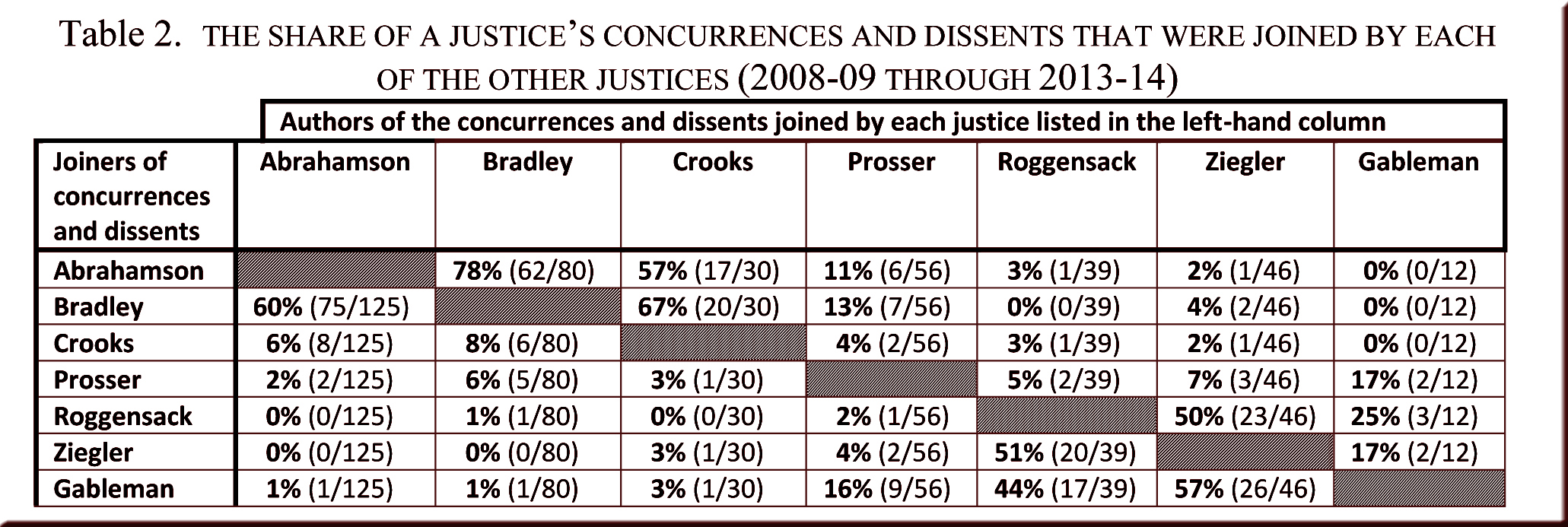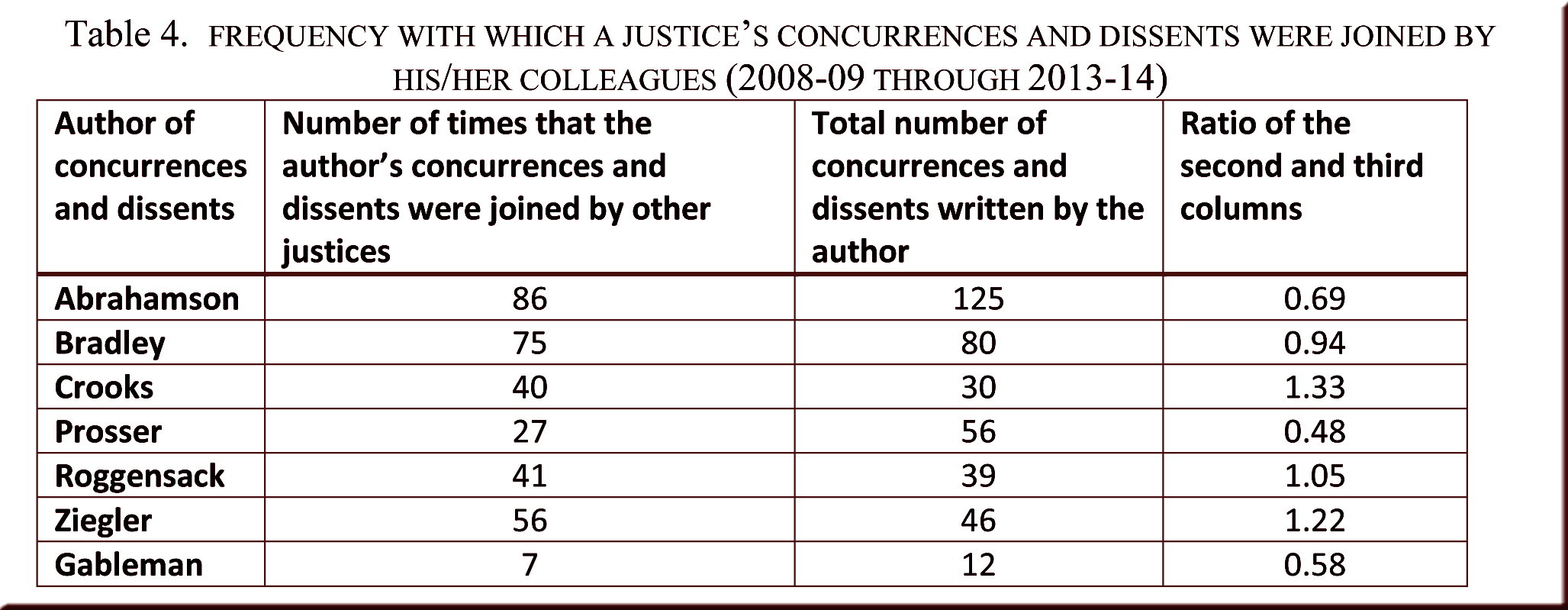These tables are derived from information contained in 53 Wisconsin Supreme Court decisions filed between September 1, 2014, and the end of the court’s term in July, 2015.[1] The total of 53 decisions does not include the following items contained in the Supreme Court’s listing of opinions and dispositional orders for this period: (1) decisions arising from disciplinary proceedings against lawyers; and (2) orders pertaining to motions for reconsideration and rulings by the Board of Bar Examiners.
Sometimes the Court’s listing of opinions and dispositional orders contains separate entries for individual cases that were consolidated and resolved by a single decision. If two or more cases were consolidated in this manner, the decision is counted only once for the purposes of the following tables.
In addition to the 53 decisions noted above, a deadlocked (3-3) per curiam decision was filed: Sohn Manufacturing Inc. v. Labor and Industry Review Commission. This is included only in the “Number of Oral Arguments Presented” table.
The tables are available as a complete set and by individual topic according to the subsets listed below.
Four-to-Three Decisions
Decisions Arranged by Vote Split
Frequency of Justices in the Majority
Distribution of Opinion Authorship
Frequency of Agreement Between Pairs of Justices
Average Time Between Oral Argument and Opinions Authored by Each Justice
Number of Oral Arguments Presented by Individual Firms and Agencies
[1] According to the Clerk’s office, no additional substantive decisions will be filed after July 16. The decisions may be found on the Wisconsin Court System website.




